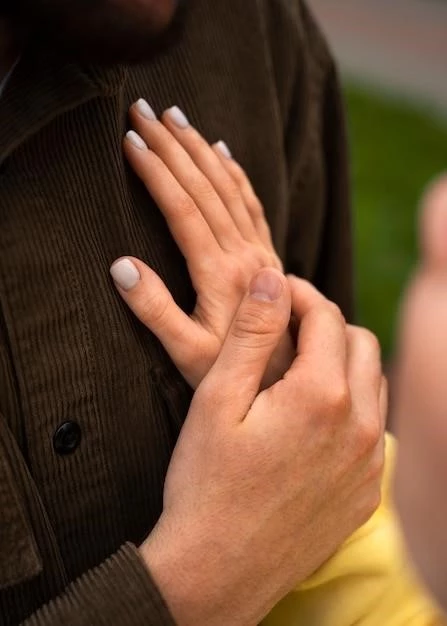Introduction to Trigger Finger
A condition affecting tendons that flex the fingers and thumb, typically resulting in a sensation of locking or catching when you bend and straighten your digits.
Trigger finger, also known as stenosing tenosynovitis, is a disorder characterized by catching or locking of the involved finger in full or near full flexion. It results in difficulty bending and straightening the finger, causing a snapping sensation. The condition most commonly affects women over the age of 50 and is characterized by a finger getting stuck in a bent position and then suddenly straightening with a snap. This can lead to pain, stiffness, and discomfort in the fingers and thumb.
Description of the Condition
Trigger finger is a disorder where a finger may get stuck in a bent position and then straighten with a snap, causing pain and stiffness.
Recognizing Trigger Finger
Recognizing trigger finger involves observing symptoms like a finger getting stuck in a bent position, followed by a sudden straightening accompanied by a snapping sensation. The affected finger may also experience pain, discomfort, and stiffness, especially during bending and straightening movements.
Diagnosing the Condition
Diagnosing trigger finger involves a physical examination to assess symptoms like finger stiffness and catching when bending. Doctors may also evaluate medical history and recommend imaging tests like ultrasound to confirm the condition. Early diagnosis is key to effective management.
Causes of Trigger Finger
Trigger finger is commonly caused by repetitive gripping actions, forceful hand use, and medical conditions like diabetes or arthritis.
Possible Triggers
Trigger finger may be triggered by repetitive gripping motions, forceful or vigorous hand activities, chronic medical conditions like diabetes or arthritis, and even certain occupational tasks that involve prolonged or repeated gripping of objects. It is important to be aware of these triggers and modify activities if necessary to reduce the risk of developing or aggravating trigger finger.

Risk Factors
Risk factors for trigger finger include repetitive gripping motions, forceful hand activities, and conditions like diabetes that may increase the likelihood of developing the condition. It is important to be mindful of these factors.
Who is at Risk?
Individuals at risk of trigger finger include those who engage in repetitive gripping activities, forceful hand motions, and individuals with medical conditions such as diabetes or arthritis. Being mindful of these factors can help manage and prevent trigger finger.
Treatment Options
Non-surgical treatment options for trigger finger include rest, splinting, medication, and steroid injections to reduce inflammation and alleviate symptoms.
Non-Surgical Treatments
Non-surgical options for trigger finger include rest, splinting, medication, and steroid injections to alleviate symptoms and reduce inflammation. Moreover, performing stretching exercises can also aid in managing the condition.
Surgical Solutions
In cases where non-surgical treatments are ineffective, surgical options for trigger finger may include procedures like trigger finger release surgery to widen the affected tendon sheath and allow smooth gliding of the tendon, ultimately improving finger mobility. Surgical solutions are considered when conservative measures have not provided relief.
Home Remedies and Self-Care
For mild trigger finger discomfort, consider anti-inflammatory meds, rest, and avoiding painful movements at home to manage symptoms.
Ways to Alleviate Discomfort
To alleviate discomfort from trigger finger at home, consider using anti-inflammatory medication, resting the affected finger, avoiding movements that trigger pain, and incorporating stretching exercises to help manage symptoms and improve finger mobility.
Preventive Measures
To prevent trigger finger, avoid repetitive gripping tasks, take breaks during activities, maintain hand flexibility, and listen to your body’s signals.
Avoiding Future Episodes
To prevent future episodes of trigger finger, it is essential to avoid repetitive gripping actions, manage conditions like arthritis or diabetes, and adopt hand-stretching exercises to maintain flexibility and reduce the risk of developing the condition. Regularly taking breaks during activities involving hand movements can also help prevent the occurrence of trigger finger.
Recurrence of Trigger Finger
In cases of trigger finger recurrence, the condition may correct itself over time. Surgical intervention may be necessary for severe or persistent cases. Listen to your body’s signals for timely management.
Dealing with Repeated Cases
When dealing with repeated cases of trigger finger, it is crucial to monitor symptoms closely. Conservative treatments, such as rest and stretching exercises, can be employed to manage recurring episodes; Surgical intervention might be considered for persistent instances to alleviate discomfort and improve finger function. Listening to your body and seeking medical advice promptly can aid in effectively addressing repeated cases of trigger finger.

Complications of Untreated Trigger Finger
Untreated trigger finger may lead to ongoing pain, stiffness, and decreased finger mobility. Seeking timely treatment is essential to avoid long-term complications.
Potential Risks
Untreated trigger finger can lead to prolonged pain, stiffness, and reduced finger mobility, impacting daily activities. Seeking timely medical attention and following the recommended treatment plan can help alleviate symptoms and prevent the condition from worsening. It is essential to address trigger finger promptly to avoid potential risks and complications associated with untreated cases.
Research and Statistics
Recent research indicates that trigger finger primarily affects the tendons in the fingers and thumb, leading to sensations of locking or catching during movements. It commonly occurs in women over the age of 50. Understanding the condition’s prevalence and symptoms can help in its effective management and treatment.
Current Findings on Trigger Finger
Current research indicates that trigger finger primarily affects the tendons in the fingers and thumb, leading to sensations of locking or catching during movements. It commonly occurs in women over the age of 50. Understanding the condition’s prevalence, symptoms, and treatment options can help individuals manage trigger finger effectively.
Frequently Asked Questions
What causes trigger finger? Can it go away on its own? Find out about the condition’s symptoms, treatments, and self-care methods here.
Common Queries and Answers
Common questions about trigger finger include its causes, if it can resolve on its own, treatment options, self-care practices, and potential preventive measures. Understanding these aspects can help individuals effectively manage trigger finger and alleviate symptoms.
